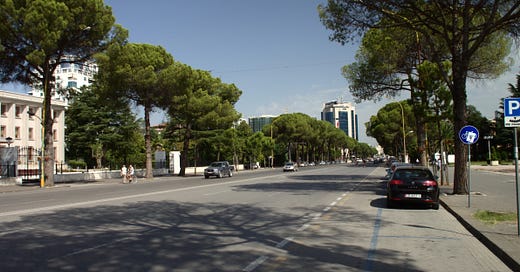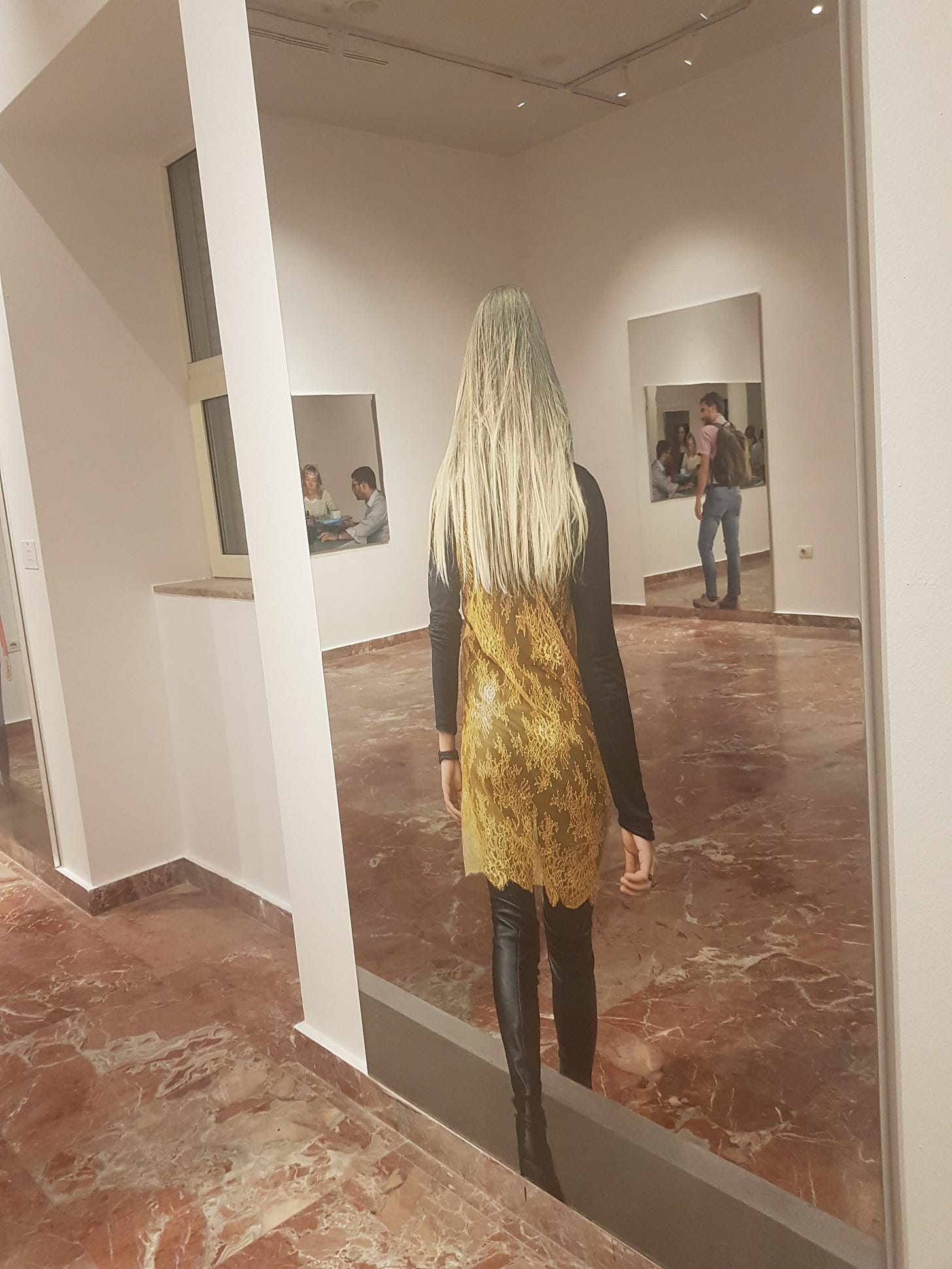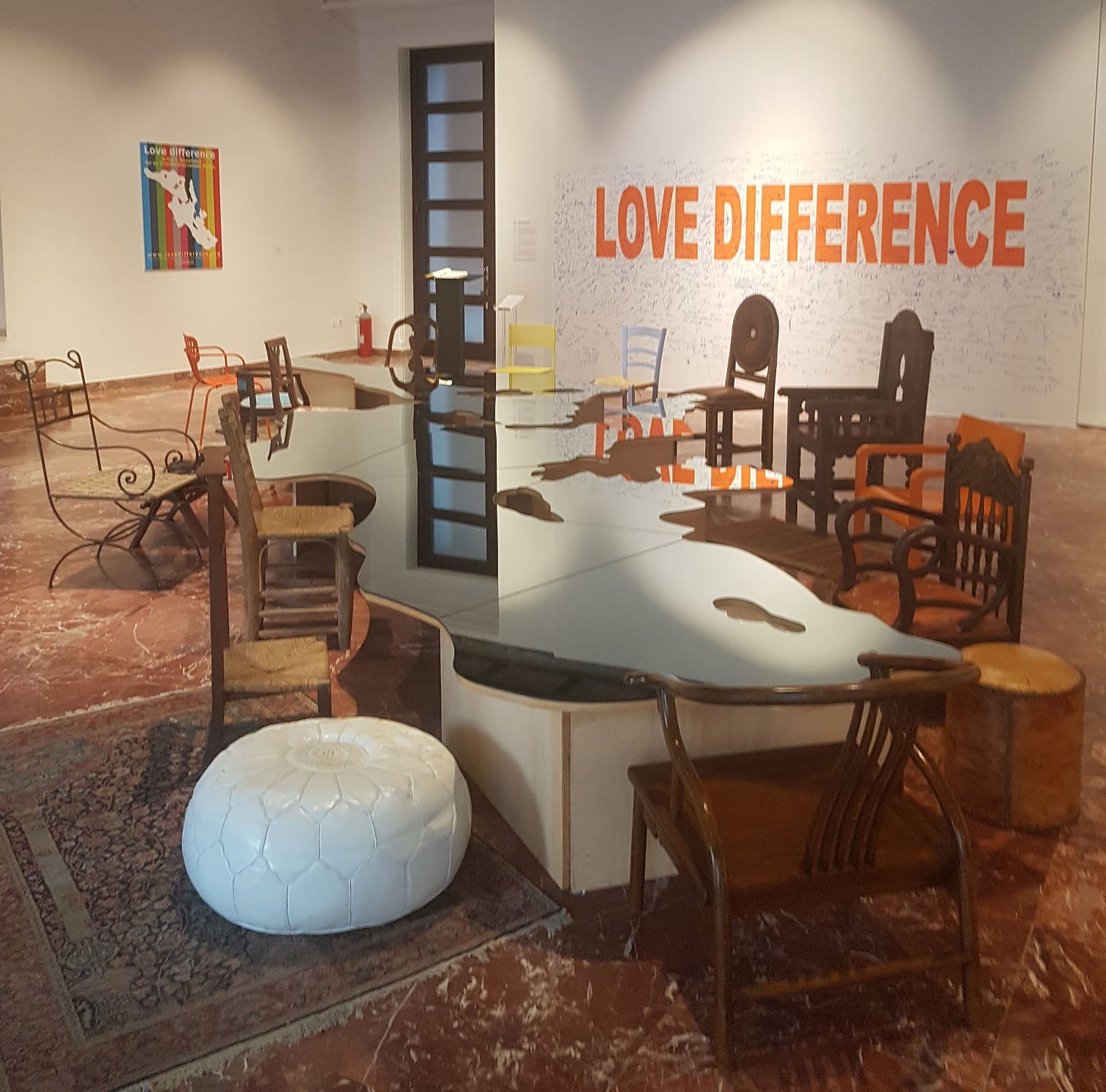I drift around the back of old Skanderbeg and head down the Boulevard of the Martyrs of the Nation (Dëshmorët e Kombit Boulevard). Designed by the Italian architect Armando Brasini, the broad expansive boulevard is one kilometre long. It was constructed in the 1930s when relations with the Italians were at their best, between King Zog and Mussolini, until the Fascists reneged on all previous agreements and invaded Albania in 1939.

The artist Edi Hila has lived in Tirana much of his life and says of the Martyrs’ Boulevard:
‘This is where we spent our youth, our life. It was there we met and fell in love. It was in that boulevard that we collided with the politics that produced our history over the years, because it was witness to many events: magnificent military parades, celebrations commanded by the communist dictatorship, and other demonstrations that usually happened in the city centre.’
He has made several paintings of the Boulevard and in this one he captures the grey forbidding anonymity of the government buildings which, at one time, flanked the road as though guarding it. Those tiny occluded windows obstinately reveal nothing while at the same time you can’t help but feel they’ve got their eyes on you.
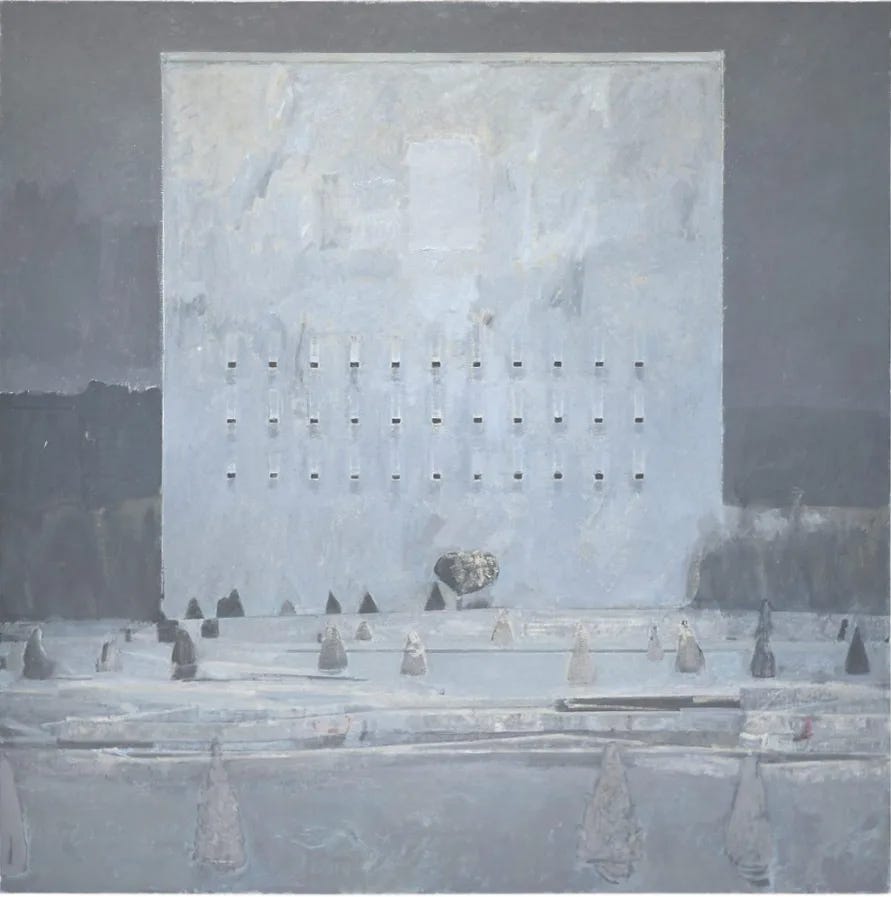
This oppressive atmosphere has since been softened by new porticos, colours, and landscaping as well as art installations like the Cloud (Reja) which has floated in front of the National Art Gallery since 2016, having arrived here from Hyde Park, where it first appeared at the Serpentine Gallery in 2013. The architect Sou Fujimoto has created a translucent architecture that encourages people to explore the site. It’s a fragile and open environment existing somewhere between the organic and the abstract. It invites you to enjoy occupying the human sized spaces repeated within the form.

Last time I was there, people were sitting around and inside the Cloud grooving to a cool jazz trio playing on a pop-up stage. It’s part of a changing cultural climate in Albania that recognises and appreciates the transformations art can bring. What a difference a Cloud can make.
Across the boulevard is Rinia (Youth) Park, built in the 1950s as part of the communist city’s urban development. At first, it was a spacious family park for children so became a relatively free and unfettered place. It stood right in front of the Blloku district where the dictator Hoxha and his apparatchiks lived. Locals called it, ironically and secretly, ‘Taivani’ (Taiwan) since it symbolised a space they hoped might be free of interference from communist authorities.
In 1991, after the end of communism, many illegal buildings sprang up all around the park; most of them kiosks, bars and makeshift restaurants, and the park became briefly notorious as a hang-out for Tirana's underworld mafia. During the city's clean-up in 2000, led by Mayor Edi Rama (see below), these buildings were razed and the park was replanted so it’s once again a well tended and attractive space for families and children. These days, the name Taivani is freely used in the open air that surrounds a white terraced pavilion, complete with bar, cafe, fountain, and its own bowling alley.
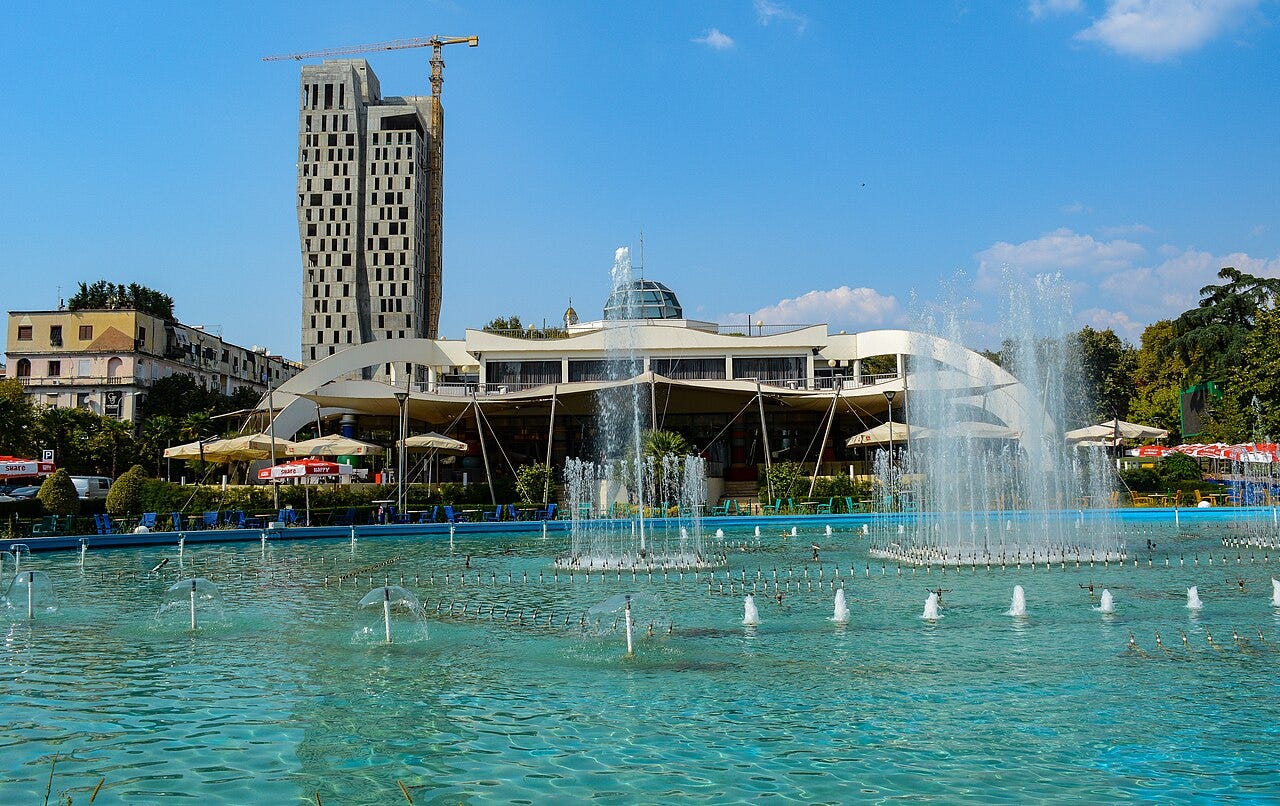
Stoically resisting the lure of a glass of red wine on the terrace of Taivani Cafe I recross the boulevard until I reach the Prime Minister’s office.

The ground floor has been repurposed as the Centre for Openness and Dialogue under current PM Edi Rama. He’s quite a character, whose CV includes: politician, painter, writer, university lecturer, publicist and basketball player. He has been an important and imposing (2.01 m tall) figure in Albania for almost 25 years since becoming Mayor of Tirana in 2000, followed by his elevation to PM in 2013. He first came to global attention when, as Mayor of Tirana, he started painting its old tower blocks and municipal buildings as a cheap and quick way of reviving the tired old structures.

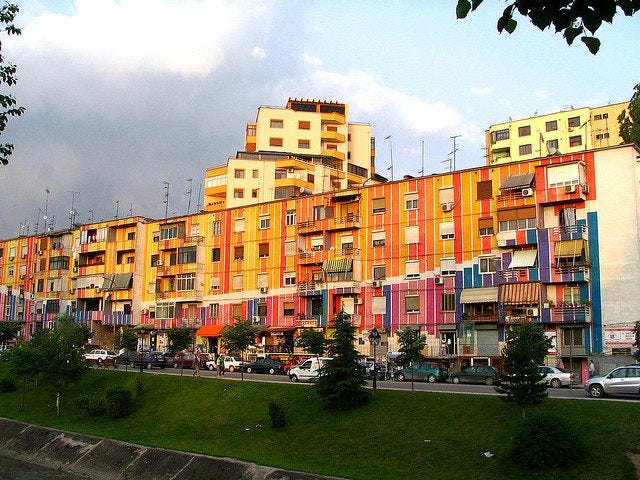
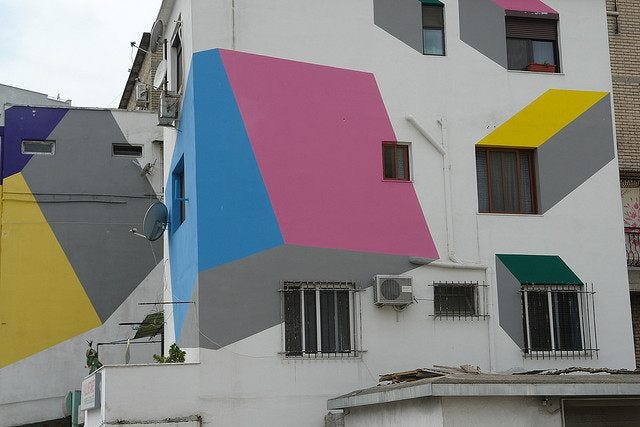
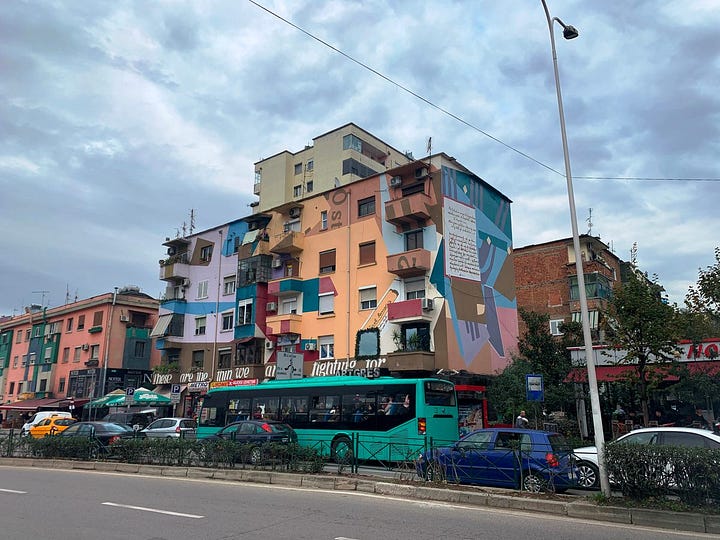
Rama has been responsible for widespread changes in Albania and has driven its western-facing developments with the aim of EU membership by the end of the decade. I’m in no position to comment on Albanian politics but I want to reflect briefly on the philosophy behind the exhibition in his office in June 2024.
The entrance hall and several rooms have been given over to the work of the Italian artist Michelangelo Pistoletto, underpinned by his combination of Art and Activism (Artivism) wherein art and artists can stimulate and activate (i.e. artivate) social change. The public profile the Rama government has offered the Artivism movement tells us something of their intentions and hopes for both Tirana and Albania. They say: ‘This approach encourages artists to become active agents of transformation’.
Pistoletto’s Mirror Paintings cleverly unsettle and disturb our notions of where we might stand in relation to artistic expression:
In Love Difference he celebrates the connectedness and diversity of nations in the form of a mirrored table in the shape of the Mediterranean basin, surrounded by chairs from the countries bordering this sea.
We’ve just elected a new Prime Minister with many admirable qualities but he’s not about to repaint Whitehall in rainbow colours and I can’t see Downing Street becoming a Centre for Openness and Dialogue any time soon. Oh Well (as Peter Green’s Fleetwood Mac memorably said).

